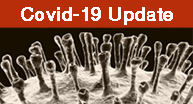Negative nasopharyngeal swabs in COVID-19 pneumonia: the experience of an Italian Emergengy Department (Piacenza) during the first month of the Italian epidemic
Keywords:
COVID-19, nasopharyngeal swab, RT-PCR, serology, Italian epidemicAbstract
Coronavirus disease (COVID-19) is a systemic disease which can cause multiple organ failure and death primarly due to vascular endothelium injury. Severe acute respiratory distress syndrome (ARDS) is the main cause of death: its management and treatment should be tailored to the individual COVID-19 patient’s phenotype. Early diagnosis of COVID-19 is paramount for disease treatment and infection control. Naso-pharyngeal (NP) swab is commonly used as screening and diagnostic tool for COVID-19, but in some cases it can be resulted negative even in presence of clinical and epidemiological criteria, and typical radiological and laboratory findings of COVID-19, as we have observed. Here we report our experience in the first month of the Italian epidemic. We strongly recommend clinicians to maintain a high index of suspicion for COVID-19, regardless of the persistence negativity of NP swabs, and not to delay the initiation of therapy in presence of typical clinical, radiological and laboratory findings of COVID-19.
References
2. Gattinoni L, Chiumello D, Caironi P, Busana M, Romitti F, Brazzi L et al.
COVID-19 pneumonia: different respiratory treatments for different phenotypes? Intensive Care Med 2020. [Epub ahead of print].
3. World Health Organization. Novel Coronavirus (2019-nCoV) technical guidance: Laboratory testing for 2019-nCoV in humans. https://www.who.int/emergencies/diseases/novel-coronavirus-2019/technical-guidance/laboratory-guidance
4. Poggiali E, Dacrema A, Bastoni D, Tinelli V, Demichele E, Mateo Ramos P, et al. Can lung US help critical care clinicians in the early diagnosis of novel coronavirus (COVID-19) pneumonia? Radiology 2020. doi: 10.1148/radiology.2020200847
5. Chung M, Bernheim A, Mei X, Zhang N, Huang M, Zeng X, et al. CT imaging features of 2019 novel coronavirus (2019-nCoV). Radiology 2020. doi: 10.1148/radiol.20202000230
6. Huang P, Liu T, Huang L, Liu H, Lei M, Xu W, et al. Use of chest CT in combination of RT-PCR assay for the 2019 novel coronavirus but high clinical suspicion. Radiology 2020. doi: 10.1148/radiol.2020200330.
7. Xie X, Zhong Z, Zhao W, Zheng C, Wang F, Liu J. Chest CT for typical 2019-nCoV pneumonia: relationship to negative RT-PCR testing. Radiology 2020. doi: 10.1148/radiol.2020200343
8. Ai T, Yang Z, Hou H, Zhan C, Chen C, Lv W, et al. Correlation of chest CT and RT-PCR testing in coronavirus disease 2019 (COVID-19) in China: a report of 1014 cases. Radiology 2020; Feb 26:200642. doi: 10.1148/radiol.2020200642
9. Tang YW, Schmitz JE, Persing DH, Stratton CW. The Laboratory Diagnosis of COVID-19 Infection: Current Issues and Challenges. J Clin Microbiol 2020. doi: 10.1128/JCM.00512-20. [Epub ahead of print]
10. Venter M, Richter K. Towards effective diagnostic assays for COVID-19: a review. J Clin Pathol 2020; May 13; jclinpath-2020-206685. doi: 10.1136/jclinpath-2020-206685. Online ahead of print.
11. Pan Y, Zhang D, Yang P, Poon LLM, Wang Q. Viral load of SARS-CoV-2 in clinical samples. Lancet Infect Dis 2020; 20 (4): 411-412. doi: 10.1016/S1473-3099(20)30113-4. Epub 2020 Feb 24.
12. Lippi G, Mattiuzzi C, Bovo C, Plebani M. Current laboratory diagnostics of coronavirus disease 2019 (COVID-19). Acta Biomed 2020; 91(2):137-145. doi: 10.23750/abm.v91i2.9548
13. Pasomsub E, Watcharananan SP, Boonyawat K, Janchompoo P, Wongtabtim G, Suksuwan W, et al. Saliva sample as a non-invasive specimen for the diagnosis of coronavirus disease-2019 (COVID-19): a cross-sectional study. Clin Microbiol Infect 2020 [Epub ahead of print]
14. Torrego A, Pajares V, Fernández-Arias C, Vera P, Mancebo J. Bronchoscopy in COVID-19 Patients with Invasive Mechanical Ventilation: A Center Experience. Am J Respir Crit Care Med.2020. [Epub ahead of print].
15. Wahidi MM, Shojaee S, Lamb CR, Ost D, Maldonado F, Eapen G, Caroff DA, et al. The Use of Bronchoscopy During the COVID-19 Pandemic: CHEST/AABIP Guideline and Expert Panel Report. Chest 2020. pii: S0012-3692(20)30850-3. doi: 10.1016/j.chest.2020.04.036

Downloads
Published
Issue
Section
License
This is an Open Access article distributed under the terms of the Creative Commons Attribution License (https://creativecommons.org/licenses/by-nc/4.0) which permits unrestricted use, distribution, and reproduction in any medium, provided the original work is properly cited.
Transfer of Copyright and Permission to Reproduce Parts of Published Papers.
Authors retain the copyright for their published work. No formal permission will be required to reproduce parts (tables or illustrations) of published papers, provided the source is quoted appropriately and reproduction has no commercial intent. Reproductions with commercial intent will require written permission and payment of royalties.






